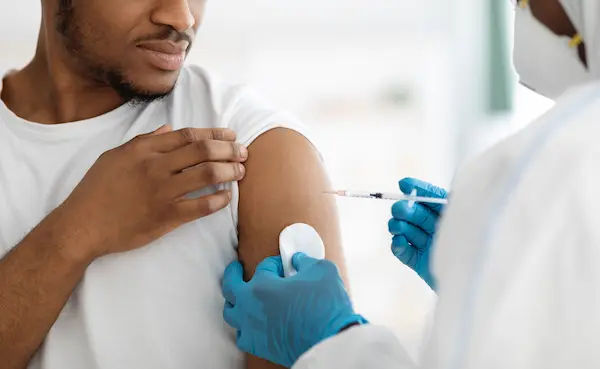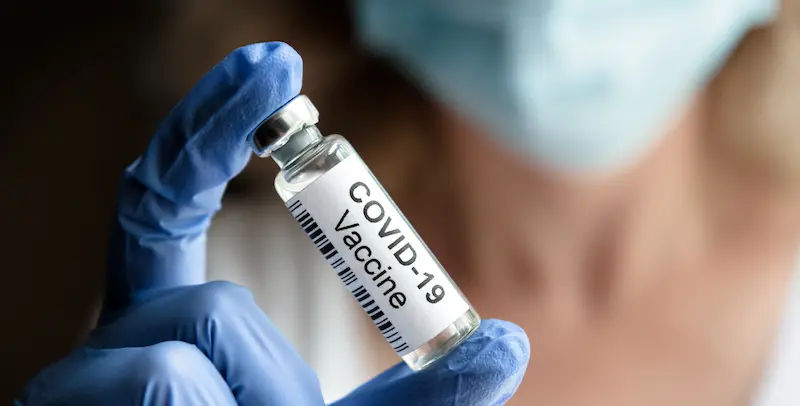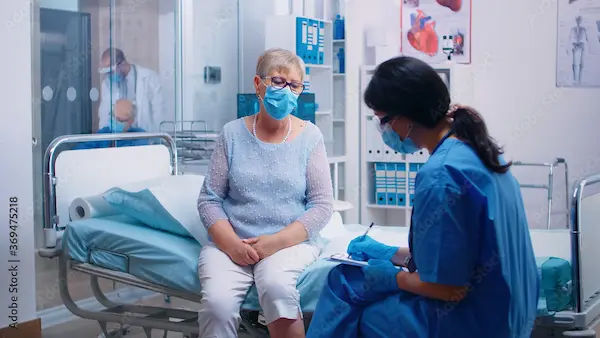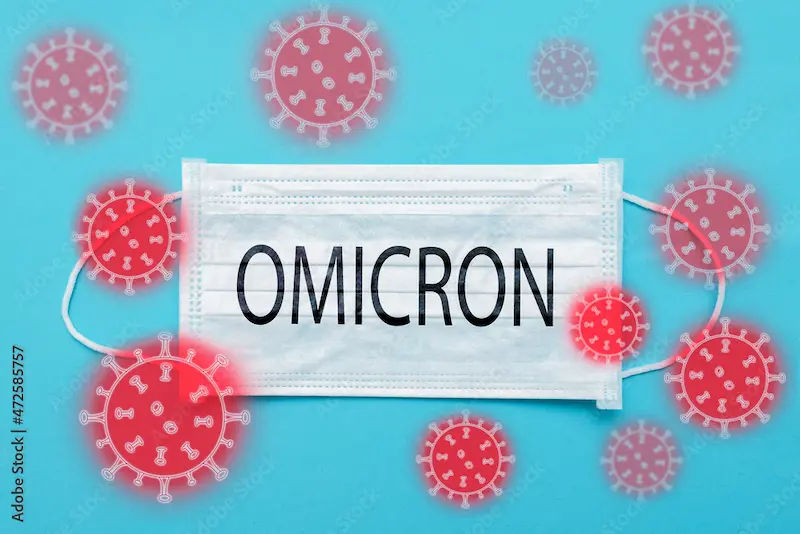Oxygen Concentrators How They Help COVID-19 Patients Breathe Better
How oxygen concentrators support COVID-19 oxygen therapy: who needs them, safe home use, and when to seek urgent care. Evidence-based, easy-to-read guide.


Introduction: Why Oxygen Support Matters in COVID-19
COVID-19 can inflame and irritate the lungs, reducing their ability to transfer oxygen into the bloodstream. When this happens, blood oxygen levels may fall to unsafe levels, and people can experience breathlessness, fatigue, dizziness, confusion or a general feeling of being unwell. As oxygen levels continue to drop, vital organs may struggle to function optimally, increasing the risk of complications. In situations like these, oxygen support becomes essential. Under COVID-19 oxygen therapy, many individuals use an oxygen concentrator at home or in healthcare settings, always under clinical supervision. This article explains what an oxygen concentrator does, how it helps, who might benefit, how to use it safely and when to seek urgent medical care.Consult a Top General Practitioner for Personalised Advice
What Is an Oxygen Concentrator and How Does It Work?
An oxygen concentrator is a medical device designed to take in room air, remove most of the nitrogen, and deliver oxygen-enriched air through a nasal cannula or face mask. Unlike oxygen cylinders that store oxygen under pressure, concentrators generate oxygen on demand as long as they are connected to a power source.
Key points about how they work:
- Room air contains roughly 21% oxygen. A concentrator draws this air in through a series of filters that remove dust and particles.
- The filtered air passes through sieve beds containing materials such as zeolite, which selectively absorb nitrogen. This separation process leaves behind air that is richer in oxygen, often around 90% or more, depending on the device and flow setting.
- Most home units offer flow rates between 1 and 5 litres per minute (L/min), although higher-capacity models exist for prescribed needs.
- There are two main types of units: stationary concentrators intended for continuous use at home, and portable concentrators designed for mobility. Portable models are lighter and battery-powered but may deliver lower continuous flows.
An oxygen concentrator should always be used exactly as prescribed. Oxygen is a form of medication and must be administered in the correct amount. Too little may be ineffective, while too much can be harmful for certain medical conditions.
When Is Covid Oxygen Therapy Needed?
Covid oxygen therapy is considered when a patient’s oxygen saturation (SpO2), measured using a pulse oximeter, falls below the level their clinician considers safe. Oxygen may also be needed when symptoms strongly suggest that the body is not receiving adequate oxygen, even if readings fluctuate.
General guidance used in clinical care:
- Many adults with respiratory illness are treated to maintain their oxygen saturation in the low-to-mid 90% range, often between 92% and 96%. People with chronic lung disease may have individualised targets.
- Seek urgent medical attention if you experience any danger signs, including severe or worsening shortness of breath, persistent chest pain, new confusion, difficulty staying awake or bluish lips or skin. Very low readings, such as around 90% or below, also require immediate medical assessment.
Who May Benefit from a Concentrator?
A home oxygen concentrator may be appropriate for individuals who:
- Have mild to moderate COVID-19 but show signs of low oxygen levels and are otherwise stable.
- Have been evaluated by a clinician who prescribes the appropriate flow setting.
- Can monitor their oxygen levels and have a clear management plan.
- Have a caregiver or manage the device safely by themselves.
- Have quick access to urgent care services if symptoms deteriorate.
People with severe respiratory distress, rapidly worsening symptoms or very low oxygen levels typically require hospital-level treatment. A home concentrator cannot replace higher-flow devices or advanced respiratory support available in hospitals.
Oxygen Concentrator vs Oxygen Cylinder vs Hospital Oxygen
Choosing the correct oxygen source depends on the person’s clinical needs and the severity of their illness. Let us see which oxygen source fits better as per the situation.
Oxygen concentrator
- What it is: A powered device that extracts oxygen from room air.
- Pros: No need for refills, cost-effective for long-term use, suitable for continuous therapy and widely available.
- Cons: Relies on electricity, limited maximum flow, oxygen purity may decline at high settings and not appropriate for all clinical situations.
Oxygen cylinder
- What it is: A tank filled with compressed oxygen.
- Pros: Works during power cuts, provides a consistent high concentration of oxygen and has portable options.
- Cons: Requires refilling, limited usage time, relatively heavy and must be stored carefully.
Hospital oxygen systems
- What they are: Centralised oxygen supply lines, high-flow devices and advanced respiratory therapies such as high-flow nasal oxygen or mechanical ventilation.
- Pros: Provide precise oxygen levels with constant monitoring and allow access to comprehensive medical care, including medicines and emergency support.
- Cons: Only available in healthcare settings and require admission.
The choice between these options depends entirely on medical assessment. If a person’s oxygen needs exceed what a home concentrator can safely provide, hospital care becomes necessary.
Safe Home Use Tips for COVID-19 Oxygen Therapy
Home oxygen therapy requires careful monitoring and attention to safety guidelines. Some safe home use tips include:
Set-up and basics
- Follow your prescribed flow rate exactly as instructed.
- Position the concentrator in a well-ventilated space with enough clearance around it to prevent overheating.
- Keep it upright and away from curtains, heaters or soft surfaces that could obstruct airflow.
Fire and electrical safety
- Never smoke or allow open flames near oxygen equipment.
- Avoid oil-based products on the face. Use water-based moisturisers instead.
- Plug the device directly into a grounded wall socket and avoid using extension leads when possible.
- Have a plan for power outages, which may include access to a backup cylinder or knowing where to seek help.
Comfort and skin care
- Nasal dryness is common. Ask your clinician whether a humidifier bottle is suitable for your device and flow setting.
- Use saline nasal sprays or water-based moisturisers to ease irritation.
- Replace cannulas and tubing regularly to reduce infection risk and improve comfort.
Cleaning and maintenance
- Clean the exterior with a dry cloth and follow the manufacturer’s guidance for filter maintenance.
- Do not attempt to repair or open the device yourself; always contact your supplier or technician for servicing.
Mobility and daily life
- Arrange tubing to avoid tripping hazards.
- Portable concentrators may allow limited outdoor activity if your prescription and device support it.
- Speak to your clinician before adjusting your activity level while on oxygen therapy.
Monitoring and When to Seek Urgent Care
Keeping track of your symptoms and oxygen readings can help identify changes early. Some monitoring tips and time to seek urgent care are:
Monitor:
- Symptoms such as breathlessness, cough, chest discomfort, fatigue or confusion.
- SpO2 readings at rest and after light activity if advised.
- The oxygen flow you are using compared with your prescribed settings.
Contact your clinician if:
- You need a higher flow to maintain your target oxygen level.
- Breathlessness, chest pain or confusion worsen.
- Your oxygen readings drop below your target range despite correct use.
Seek emergency care immediately for:
- Severe breathing difficulty.
- Persistent chest pain or pressure.
- New confusion or inability to stay awake.
- Bluish or grey lips, skin or nails.
- Very low oxygen levels that do not improve even with oxygen therapy.
How Oxygen Fits Into Overall COVID-19 Care?
Oxygen therapy treats low oxygen levels but does not target the virus itself. Clinicians may prescribe other treatments depending on your risk factors and illness severity. These may include antiviral medicines, corticosteroids or anticoagulants. Supportive measures such as rest, hydration, nutrition and managing fever remain important throughout recovery. Remaining up to date with vaccinations and following the clinician's advice also helps reduce complications.
Myths and Facts About Oxygen Concentrators
- Myth: More oxygen is always better.
Fact: Excessive oxygen can be harmful. Only use the flow rate prescribed. - Myth: An oxygen concentrator prevents COVID-19.
Fact: It does not prevent infection. It only supports breathing when oxygen levels drop. - Myth: Having a concentrator means avoiding hospital care.
Fact: Some people recover at home, but many require hospital-level support. - Myth: Any mask or cannula works with a concentrator.
Fact: Always use the equipment specifically recommended for your device.
Choosing and Using an Oxygen Concentrator Safely
Before starting therapy, discuss the following with your healthcare provider or oxygen supplier. Here are some useful tips while choosing it:
- Prescription specifics, including target SpO2, flow rates for rest and activity and duration of treatment.
- The type of device is best suited to your needs, whether stationary or portable.
- Power backup arrangements and options for emergencies.
- Proper equipment training, including how to fit the cannula, understand alarms and maintain filters.
- Home safety planning, including fire safety measures.
Where does the Oxygen Concentrator fit in Covid Oxygen Therapy?
For many recovering patients, especially those discharged from the hospital or monitored through home-care programmes, an oxygen concentrator offers a practical bridge during recovery. It provides steady, prescribed oxygen support and allows people to rest in a familiar environment while their lungs heal. For others, it may be used for a shorter period during illness. The most important factors are appropriate medical assessment, safe use and consistent communication with healthcare professionals.
Conclusion
Oxygen therapy plays a crucial role in supporting people whose oxygen levels fall during COVID-19. Oxygen concentrators offer a reliable source of oxygen when used correctly and under clinical guidance. They can help individuals recover safely at home, reduce discomfort and maintain stable oxygen levels. However, the decision to use a home concentrator must always be made by a healthcare professional. Monitoring symptoms closely, following safety measures and seeking urgent care when needed are essential. With the right approach, an oxygen concentrator can be a valuable part of COVID-19 oxygen therapy, helping people breathe more comfortably and confidently as they heal.Consult a Top General Practitioner for Personalised Advice
Consult a Top General Practitioner for Personalised Advice

Dr Syed Mateen Pasha
General Physician
2 Years • MBBS
Bengaluru
PRESTIGE SHANTHINIKETAN - SOCIETY CLINIC, Bengaluru

Dr. Anand Ravi
General Physician
2 Years • MBBS
Bengaluru
PRESTIGE SHANTHINIKETAN - SOCIETY CLINIC, Bengaluru

Dr. D Bhanu Prakash
General Practitioner
10 Years • MBBS, AFIH, Advanced certificate in critical care medicine, Fellowship in critical care medicine
Hyderabad
Apollo 24|7 Clinic, Hyderabad

Dr. Johnson. S
General Practitioner
7 Years • MBBS MD(Preventive and social Medicine)
Pune
Apollo Clinic, Nigdi, Pune

Dr. Madhuri Sai Sreepada
General Practitioner
9 Years • MBBS
Hyderabad
BRIGHT SMILES MEDICARE & DENTAL CARE, Hyderabad
Consult a Top General Practitioner for Personalised Advice

Dr Syed Mateen Pasha
General Physician
2 Years • MBBS
Bengaluru
PRESTIGE SHANTHINIKETAN - SOCIETY CLINIC, Bengaluru

Dr. Anand Ravi
General Physician
2 Years • MBBS
Bengaluru
PRESTIGE SHANTHINIKETAN - SOCIETY CLINIC, Bengaluru

Dr. D Bhanu Prakash
General Practitioner
10 Years • MBBS, AFIH, Advanced certificate in critical care medicine, Fellowship in critical care medicine
Hyderabad
Apollo 24|7 Clinic, Hyderabad

Dr. Johnson. S
General Practitioner
7 Years • MBBS MD(Preventive and social Medicine)
Pune
Apollo Clinic, Nigdi, Pune

Dr. Madhuri Sai Sreepada
General Practitioner
9 Years • MBBS
Hyderabad
BRIGHT SMILES MEDICARE & DENTAL CARE, Hyderabad
More articles from Covid
Frequently Asked Questions
Q1: Can I use an oxygen concentrator without a doctor’s prescription?
No. Oxygen is a prescribed therapy. Using it without medical guidance may be unsafe and can mask serious symptoms.
Q2: What oxygen level suggests I might need oxygen?
Individual circumstances vary. Persistently low levels or severe symptoms require prompt evaluation.
Q3: Is a portable concentrator enough for COVID-19 oxygen therapy?
It depends on your required flow. Some portable units do not provide continuous higher flows.
Q4: How long can a concentrator run continuously?
Home models are designed for continuous use as long as they are properly maintained.
Q5: What side effects should I watch for?
Dryness, mild nosebleeds or skin irritation can occur. Water-based moisturisers and saline sprays often help.




